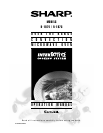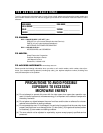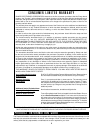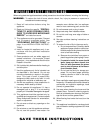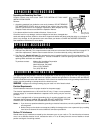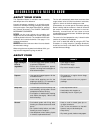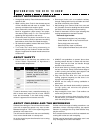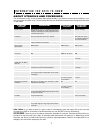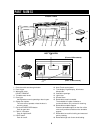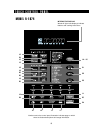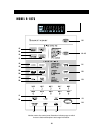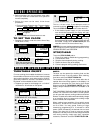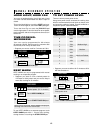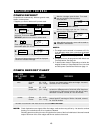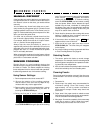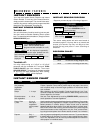
6
ABOUT MICROWAVE COOKING
• Arrange food carefully. Place thickest areas towards
outside of dish.
• Watch cooking time. Cook for the shortest amount
of time indicated and add more as needed. Food
severely overcooked can smoke or ignite.
• Cover foods while cooking. Check recipe or cook-
book for suggestions: paper towels, wax paper,
microwave plastic wrap or a lid. Covers prevent
spattering and help foods to cook evenly.
• Shield with small flat pieces of aluminum foil any
thin areas of meat or poultry to prevent overcooking
before dense, thick areas are cooked thoroughly.
• Stir foods from outside to center of dish once or twice
during cooking, if possible.
• Turn foods over once during microwaving to
speed cooking of such foods as chicken and ham-
burgers. Large items like roasts must be turned over
at least once.
INFORMATION YOU NEED TO KNOW
• Rearrange foods such as meatballs halfway
through cooking both from top to bottom and from
the center of the dish to the outside.
• Add standing time. Remove food from oven and
stir, if possible. Cover for standing time which allows
the food to finish cooking without overcooking.
• Check for doneness. Look for signs indicating that
cooking temperatures have been reached.
Doneness signs include:
- Food steams throughout, not just at edge.
- Center bottom of dish is very hot to the touch.
- Poultry thigh joints move easily.
- Meat and poultry show no pinkness.
- Fish is opaque and flakes easily with a fork.
• Check foods to see that they are cooked to the
United States Department of Agriculture's
recommended temperatures.
To test for doneness, insert a meat thermometer in a
thick or dense area away from fat or bone. NEVER
leave the thermometer in the food during cooking,
unless it is approved for microwave oven use.
• ALWAYS use potholders to prevent burns when
handling utensils that are in contact with hot food.
Enough heat from the food can transfer through
utensils to cause skin burns.
• Avoid steam burns by directing steam away from
the face and hands. Slowly lift the farthest edge of
a dish's covering and carefully open popcorn and
oven cooking bags away from the face.
• Stay near the oven while it's in use and check
cooking progress frequently so that there is no
chance of overcooking food.
• NEVER use the cavity for storing cookbooks or
other items.
• Select, store and handle food carefully to preserve
its high quality and minimize the spread of
foodborne bacteria.
• Keep waveguide cover clean. Food residue can
cause arcing and/or fires.
• Use care when removing items from the oven so
that the utensil, your clothes or accessories do not
touch the safety door latches.
ABOUT SAFETY
... for fresh pork, ground meat,
boneless white poultry, fish,
seafood, egg dishes and frozen
prepared food.
... for leftover, ready-to-reheat
refrigerated, and deli and carry-
out “fresh” food.
... white meat of poultry.
... dark meat of poultry.
160°F
TEMP FOOD
165°F
170°F
180°F
Children should be taught all safety precautions: use
potholders, remove coverings carefully, pay special
attention to packages that crisp food because they
may be extra hot.
Don’t assume that because a child has mastered one
cooking skill he/she can cook everything.
Children need to learn that the microwave oven is not
a toy. See page 25 for Child Lock feature.
ABOUT CHILDREN AND THE MICROWAVE
Children below the age of 7 should use the microwave
oven with a supervising person very near to them.
Between the ages of 7 and 12, the supervising person
should be in the same room.
The child must be able to reach the oven comfortably;
if not, he/she should stand on a sturdy stool.
At no time should anyone be allowed to lean or swing
on the oven door.



